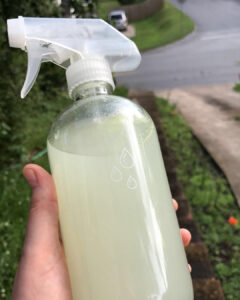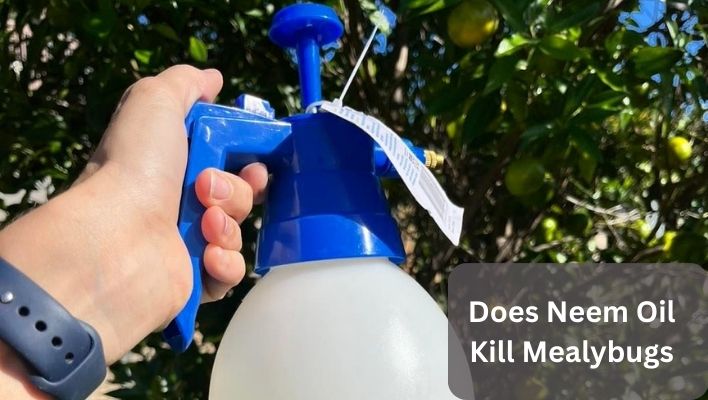Mealybugs are a common pest that can cause significant damage to plants and crops. These tiny, white, cottony insects feed on the sap of plants, causing stunted growth, yellowing of leaves, and even death of the plant. If left untreated, mealybugs can quickly multiply and infest an entire garden or greenhouse.
Fortunately, there are many ways to control mealybugs, one of which is by using neem oil, a natural and organic pesticide. Neem oil is derived from the seeds of the neem tree and has been used for centuries in India as a traditional medicine and insect repellent.
This article will provide a comprehensive guide to using neem oil to control mealybugs. We will discuss mealybugs, their harmful effects on plants, and how neem oil works as an effective organic pesticide against them. We will also provide a step-by-step guide for using neem oil, precautions, and tips for applying it effectively.
Additionally, we will answer frequently asked questions about neem oil and mealybugs to provide readers with a comprehensive understanding of this natural pest control method. By the end of this article, readers will have the knowledge and confidence to use neem oil as a safe and effective alternative to chemical pesticides.
What are Mealybugs?
Mealybugs are small, soft-bodied insects that belong to the family Pseudococcidae. They are named after their appearance, similar to that of a meal or cotton. Mealybugs range in size from 1/16 to 1/4 inch and are usually white or pale yellow.
Mealybugs are common pests in many parts of the world, and they can be found in various habitats, including greenhouses, gardens, and indoor plants. They are typically found on the undersides of leaves, along the stems, and in the crevices of plants. Here is what causes mealybugs or how they get to your plants.
Mealybugs feed on the sap of plants by piercing the plant tissue with their mouthparts and sucking out the sap. This can cause stunted growth, yellowing of leaves, and distortion of new growth. Severe infestations can result in leaf drop, dieback, and even plant death.
Some of the most common plants affected by mealybugs include citrus, grapes, poinsettias, orchids, and ferns. Mealybugs can also infest vegetables such as tomatoes, peppers, and eggplants. If left untreated, mealybugs can quickly multiply and spread to other plants, causing widespread damage.
How does Neem Oil work?
Neem oil is a natural and organic pesticide extracted from the neem tree’s seeds (Azadirachta indica). It has been used for centuries in India as a traditional medicine and insect repellent. Neem oil contains various natural compounds, including azadirachtin, which has insecticidal properties.
Neem oil disrupts the insect’s hormonal system, preventing it from feeding and reproducing. It also repels insects and can deter them from laying eggs on the plant. Because neem oil is a natural pesticide, it is safe for children, pets, and beneficial insects such as bees and ladybugs.
Compared to other types of pesticides, neem oil is an effective and environmentally friendly option. Unlike chemical pesticides, neem oil does not leave harmful residues on plants, soil, or water sources.

To use neem oil as a pesticide, mix it with water and apply it to the affected plants using a spray bottle or garden sprayer. Read the instructions carefully before applying, and follow the recommended dilution rates for your specific application. You may need to reapply neem oil every 7 to 14 days to eradicate the mealybugs.
When applying neem oil, taking precautions to protect yourself and your plants is important. Neem oil can cause skin and eye irritation, so wear protective clothing and gloves. Avoid applying neem oil during the hottest part of the day, as it can burn the plant leaves. Also, avoid spraying neem oil on flowers and other beneficial insects to prevent harm.
Effectiveness of Neem Oil in Killing Mealybugs
Numerous studies have shown that neem oil is an effective pesticide in controlling mealybugs. In one study, researchers found that a 1% solution of neem oil applied to infested plants reduced mealybug populations by up to 90% after just one week of treatment. Other studies have also shown neem oil to effectively control other insect pests, including aphids, whiteflies, and thrips.
Compared to other organic and chemical pesticides, neem oil is a safe and effective alternative with fewer negative impacts on the environment and human health. Neem oil is non-toxic and biodegradable, making it a preferred choice for organic farmers and gardeners. It is also less harmful to beneficial insects such as bees, ladybugs, and lacewings, which play a crucial role in pollination and natural pest control.
In addition to its insecticidal properties, neem oil also provides other benefits to plants, including improved soil health, enhanced root development, and increased tolerance to environmental stressors such as drought and heat. These benefits make neem oil valuable to any plant care regimen, even when mealybugs are absent.
Neem oil is a highly effective and safe alternative to chemical pesticides for controlling mealybugs and other insect pests. Its multiple benefits make it a preferred choice for gardeners and farmers who want to protect their plants while minimizing negative environmental and human health impacts.
How to Use Neem Oil to Kill Mealybug
Neem oil is a safe and effective pesticide that can control mealybugs on plants. Using neem oil as a pesticide for mealybugs is relatively straightforward, but there are a few key steps to ensure it is applied correctly and effectively.

- Identify the Infestation: Before applying neem oil, identify which plants are infested with mealybugs. Check the undersides of leaves, where mealybugs tend to hide and feed.
- Mix the Solution: Follow the manufacturer’s instructions to mix the neem oil solution. Typically, you will need to dilute the oil with water, and you may also need to add a surfactant or emulsifier to help it adhere to the plant.
- Test the solution on a small area of the plant. Before applying the neem oil to the entire plant, test it on a small area to ensure it is not sensitive to the solution.
- Apply the Solution: Using a sprayer or spray bottle, apply the neem oil solution to the affected plants. Be sure to cover both the tops and undersides of the leaves, the stems, and other areas where mealybugs are present.
- Repeat the Application: Reapply the neem oil solution every 7-14 days, or as needed, until the mealybug infestation is under control. Monitor the plants regularly to ensure that the mealybugs have not returned.
Tips for Applying Neem Oil Effectively:
- Apply neem oil early in the morning or late in the evening when temperatures are cooler, and the sun is less intense to avoid causing damage to the plant.
- Make sure to cover all parts of the plant with the neem oil solution, especially hard-to-reach areas where mealybugs may be hiding.
- If the infestation is severe, consider using a higher concentration of neem oil, up to a 5% solution.
- Apply neem oil before mealybugs become too widespread, as it is more effective in the early stages of infestation.
Precautions to Take When Using Neem Oil:
- Wear protective clothing, including gloves and a mask, when handling neem oil.
- Avoid spraying neem oil on stressed plants, which can cause further damage.
- Do not apply neem oil to plants in direct sunlight or during high temperatures, as this can cause damage to the plant.
- Keep neem oil out of reach of children and pets, and store it in a cool, dry place away from food and drink.
Does Neem Oil Kill Mealybugs FAQs
Can neem oil kill other pests besides mealybugs?
Yes, neem oil is effective against many pests, including aphids, spider mites, whiteflies, and thrips. It also has antifungal properties, making it useful in controlling plant fungal diseases.
Can neem oil harm beneficial insects?
Neem oil is generally safe for beneficial insects like bees and ladybugs. However, it is always recommended to apply neem oil in the evening when bees and other beneficial insects are less active.
Can neem oil be used on all plants?
Neem oil can be used on most plants, but it is always recommended to do a patch test before applying it to the entire plant. Some plants may be sensitive to neem oil and experience leaf burn or other damage.
How often should I apply neem oil to kill mealybugs?
Applying neem oil every 7-10 days is recommended until the infestation is gone. It is important to monitor the plants regularly to ensure that mealybugs do not return.
Can neem oil be used indoors?
Yes, neem oil can be used indoors to control mealybugs and other pests. However, ensuring proper ventilation and avoiding spraying on furniture or fabrics is important.
Are there any alternative methods for controlling mealybugs?
Several alternative methods for controlling mealybugs include using insecticidal soap, rubbing alcohol, or introducing natural predators like ladybugs or lacewings. However,
Conclusion
In conclusion, mealybugs are a common pest that can cause significant damage to plants and crops. Neem oil is a natural and effective alternative to chemical pesticides for controlling mealybugs and other insect pests. Its insecticidal properties and other benefits, such as improved soil health and increased plant resilience, make it a valuable addition to any plant care regimen.
When using neem oil as a pesticide, following the recommended application instructions and taking precautions to protect yourself, the environment and the plants is important. Using neem oil can effectively control mealybug infestations without harming beneficial insects or the environment.
By using neem oil, you can avoid the negative impacts of chemical pesticides on the environment and human health while protecting your plants. With proper application and precautions, neem oil can be valuable to any plant care regimen.
